Life in Sofia for digital nomads
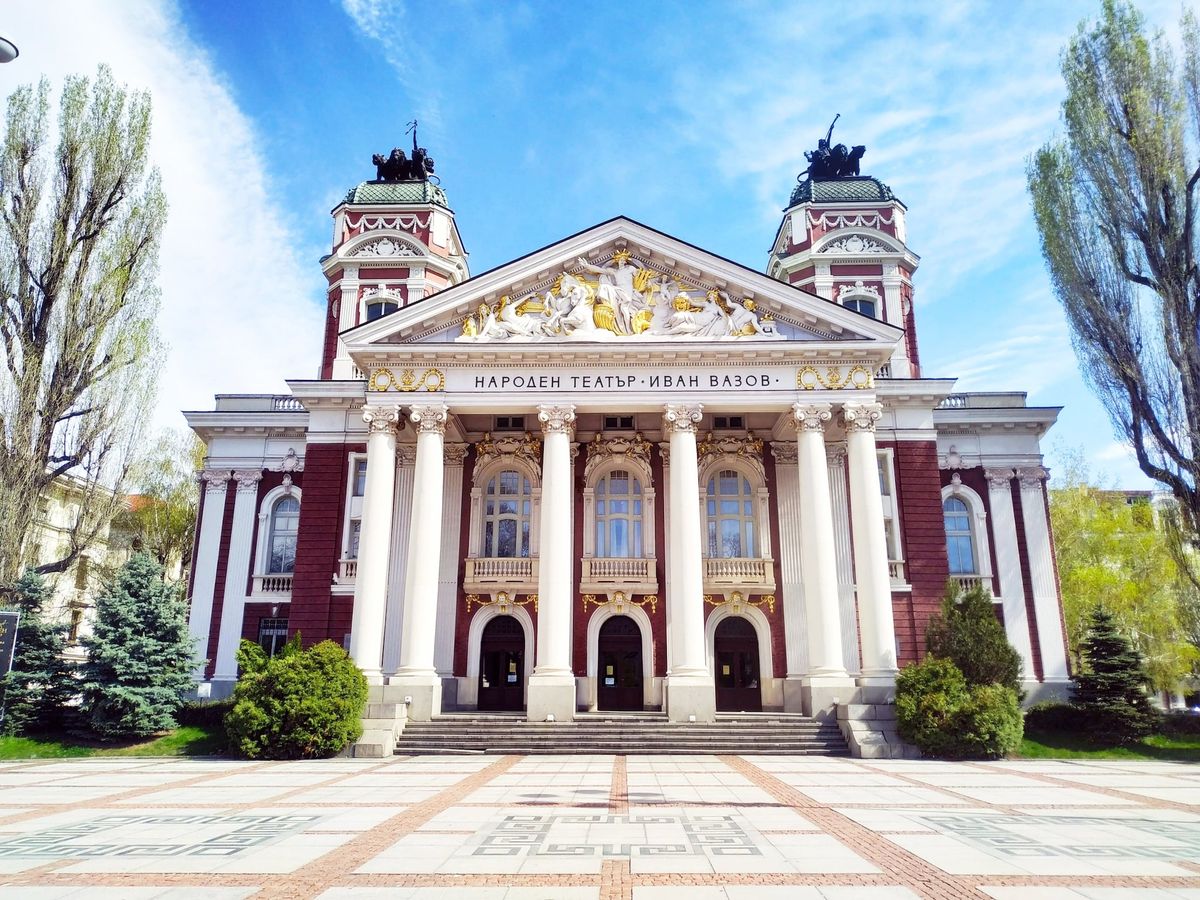
We’ve spent the last three months in Sofia, Bulgaria, and we are going to be here until November at least. The city may as well be one of the best spots in Europe for digital nomads, expats, and slow travelers. In this post, I share our experience living and working here.
Staying in Sofia until the end of the year was not our initial plan. We were going to spend here March and April only, and then fly to Tallinn, Estonia. However, COVID-19 forced us to change our plans, and we thought it was the perfect chance to start traveling more slowly, something that had been in our minds for some time.
So how is Sofia for digital nomads? Well, let’s see… Different people have different metrics when evaluating how good –or bad– a place is.
For context, my partner and I are digital nomads and entrepreneurs. We are in our 40’s, so we are not rich teenagers on sabbatical, posting about the best beaches of Thailand on TikTok or Instagram. We need to work every day and have a medium budget.
As a result, we value living in comfortable, hassle-free apartments located in peaceful and culturally interesting neighborhoods, with access to co-working spaces or good Wi-fi connections, and a low-to-average cost of living.
You have more chances of finding us in a local restaurant or café than in Starbucks or McDonalds. We are not really interested in nightlife, but we do enjoy delving into the local culture, wildlife, and gastronomy.
Are we on the same page? Good! Let’s start.
✈️ Why Sofia, Bulgaria?
After exploring some cities of the Balkans such as Rijeka, Ljubljana, Zagreb, or Belgrade, we realized that the further you go east, the more interesting things become. We wanted to visit Bucharest, in Romania, but we decided to start with Bulgaria.
Now, if you look in the mainstream digital nomad media (yep guys, that’s a thing now :), a city seems to attract all the looks: Bansko. However, some quick research dissuaded us from going there. They have a co-working space that is making an amazing marketing job to attract digital nomads, but apart from just this ONE co-working space (who didn’t wow us at all given its price), there was not much else going on there. We also didn’t want to be “forced” to like one scene (one co-working space, one community around it, etc). What if we didn’t like the space, or didn’t get along with the people working there?
The capital, on the other hand, offered us much more in terms of things to do, restaurants, bars, museums, cafés, communities, plenty of places to work from, etc.
Arriving in Sofia
As we are now into slow traveling and –especially after living in Bali– we are trying to reduce our ecological footprint, we decided to get there by bus. It was the end of February, so we also had concerns about flying due to the coronavirus, which was just starting to spread through Europe.
As you can read in the article, that was a huge mistake. The infrastructures and bus network of Serbia are absolutely terrible. We almost did not make it to Sofia. If we had to do this again, we would take a plane.

Regardless of how you arrive in Sofia, there is a metro station both at the airport and the bus station. From the airport, get into line 1. From the bus or train stations, get into line 2. All of them will take you to Serdika, which is the main hub where all metro lines converge. From there, you can easily reach most destination in the metropolitan area.
The city and its surroundings
Choosing the right neighborhood to live in a city is important for us, digital nomads, but in Sofia, I would say it is essential. Unlike Zagreb, Sofia does not have a clear distinction between the “old town” and the “soviet town”, but the area you choose can make a huge difference on how you experience the city.
The most beautiful part of the city is the eastern side. That’s where the nice buildings, cafés, restaurants, co-working spaces and parks are. The western part of the city, from the St. Kyriaki Cathedral Church to the left, is an amalgam of grey old soviet buildings and malls designed to accommodate as many working-class families as possible.
We spent our first two months in an apartment near the Mall of Sofia, on the western side. Bulgaria declared the estate of emergency (and lockdown) soon after we arrived, so we were forced to stay in our area. Our impression then was that Sofia was an ugly, uninspiring city.
Then, when the restrictions were lifted and we were free to explore other neighborhoods, we discovered “the other Sofia”, the majestic buildings, vast gardens and parks, and beautiful cafés and restaurants. I remember thinking “Wow, so Sofia TRULY is a beautiful city“.
And it is. Sofia’s old town has this contrast between East and West that you can only find in cities such as Riga or Vilnius, but with its own character. It’s hard to describe, you need to see it with your own eyes.

Accommodation
Accommodation is VERY affordable in Sofia. There are plenty of quality AirBnB apartments at very reasonable prices.
For reference, we live now in an amazing two-bedroom apartment in front of the “Ivan Vazov” National Theater for 800€ a month. The apartment has been recently redesigned and renovated, and you cannot possibly imagine having an apartment like this one in Madrid’s city center for less than 4-5k euros a month.
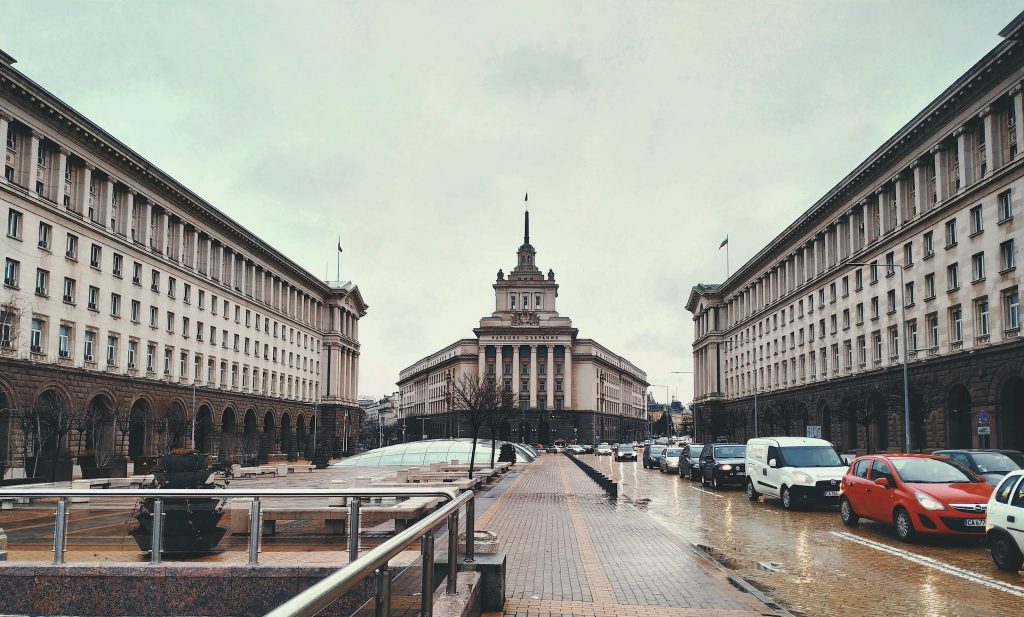
Noise, Traffic, And Safety
While there is not a lot of traffic in Sofia, Bulgarians are impatient, aggressive drivers, even violent sometimes. This is no exaggeration. If you are walking through a pedestrian crossing, you feel the cars almost touching you, getting far closer that would be safe, and you can’t help but think that if you tip or stop for a split second, they will run over you. It’s so bad. Having experienced traffic in cities such as Madrid (which has the same population as the whole country of Bulgaria) I wonder why people in Sofia are so stressed by traffic.
So my advice: be careful if you rent a car, and if you ride a bicycle, stay in the parks and gardens and avoid venturing into traffic.
Regarding noise, the western area, being a residential zone for families, is quiet and tranquil at night. The old town and the eastern side of the city get busy with students and young people partying on weekends, so it is very noisy, especially at night. Bulgarians wake up early, but they go to bed very late too (confirmed by my sleep tracking app), and unfortunately, they don’t share the same culture of silence and respect to the neighbors that you can find in northern Europe.
Now about safety in general, Sofia feels like a safe city. At night, you may see some homeless people wandering around or drunk students here and there, nothing more.
Public Transportation And Walkability
Sofia is a relatively small European city, which means it is totally walkable. Even when we were living in our first apartment, quite far from the city center, we reached the old town in 25 minutes on foot. If you live closer, as we do now, everything is at a short walk distance.
There are, however, plenty of trams and –electric– bus lines in Sofia. The capital of Bulgaria is one of the greenest ones in Europe. Some of the trams are quite modern, while others seem to date back from Soviet times. I especially love the green ones.
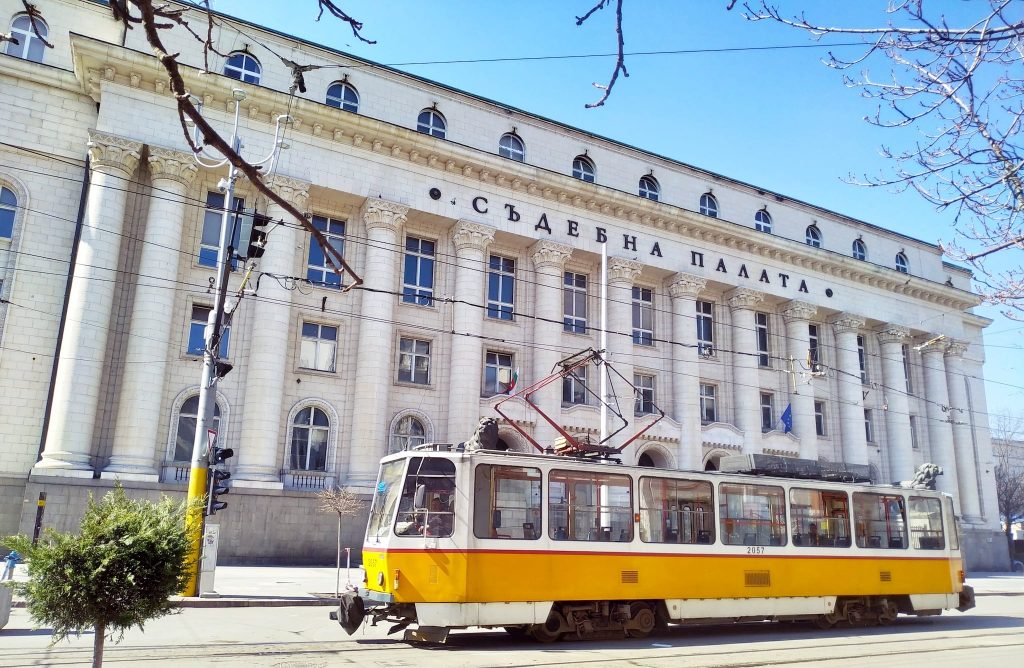
Sofia’s metro is nothing short of spectacular. It is clean, modern, and covers the most interesting places in the metropolitan area. You can buy a single ticket directly at the station for 1,60 Lev (0,80€) or a 10-trip card for 10 Lev (5€). That makes it one of the best, most affordable metro services in Europe.
Uber does not work in Sofia, and there is no alternative ride-sharing app. There are two regular taxi apps, but both have the typical problems associated with regular taxis: dishonest drivers trying to rip off tourists, smoking, loud music, aggressive drivers, etc. Not recommended.
So overall it is very easy to move in Sofia by bus, tram, metro, or simply walking.
Tourism And Gentrification
Shortly after we arrived, Bulgaria declared the estate of emergency and closed its borders. As a result, we have not found a single tourist here. I have the feeling that there may be some tourism here in a normal situation, but not as much as in best-known locations such as Paris, Prague, Berlin or Barcelona.
The very special circumstances we are living now in the post-COVID-19 world has allowed us to see a pristine, untainted Sofia. We are grateful for that. We have found ourselves walking around the “Ivan Vazov” National Theater, the Cathedral Saint Aleksandar Nevski or the university of Sofia, almost alone. These are absolutely jaw-dropping places that would (supposedly) be usually packed with tourists, but we were the only ones around.
So I don’t know if that’s because of the coronavirus pandemic, or because Sofia is not a touristy place after all, but I am simply delighted to have had the chance of experiencing these beautiful places almost exclusively.
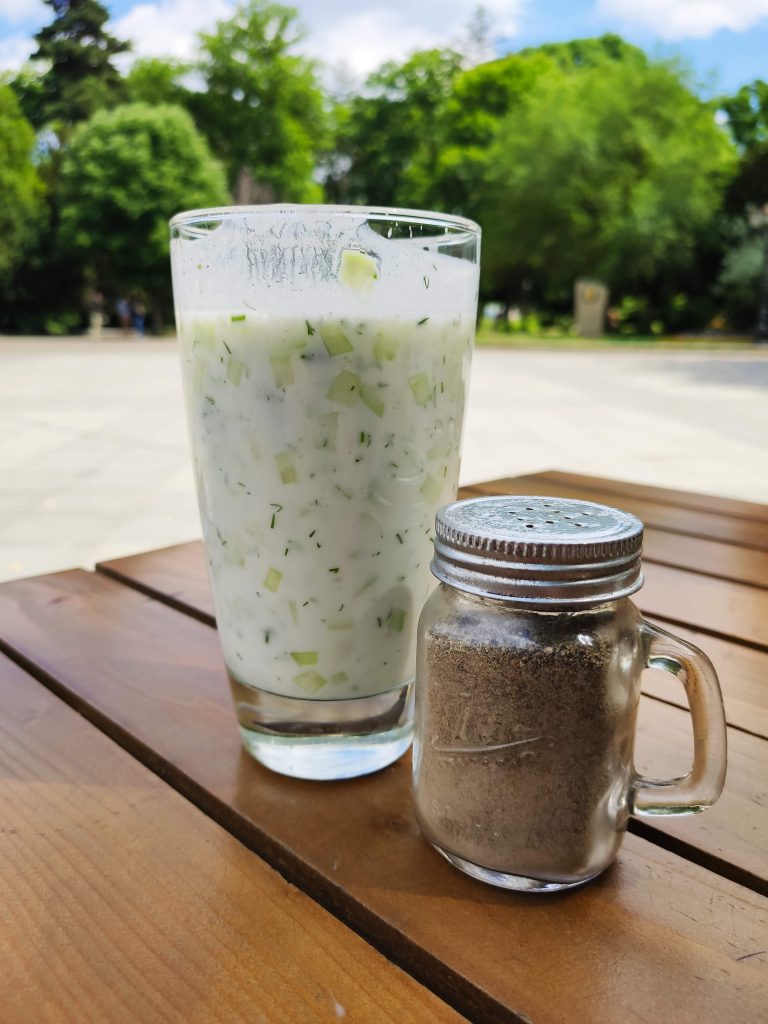
Food
We absolutely love the food here. Bulgaria is a very diverse country that sits between the east and the west. During their history, they have been occupied or have been part of the Ottoman Empire, the Byzantines, the Roman and Balkan forces, and the now-defunct Soviet Union.
All these rich influences merge into the local cuisine. Probably the most famous dish here (and the most popular) is the Meshana Skara, which is nothing more than a mixed grill of different types of meat served with vegetables. Typically, they serve you two pieces of minced meat like burgers without the bread, some fries, vegetables, and sauce.
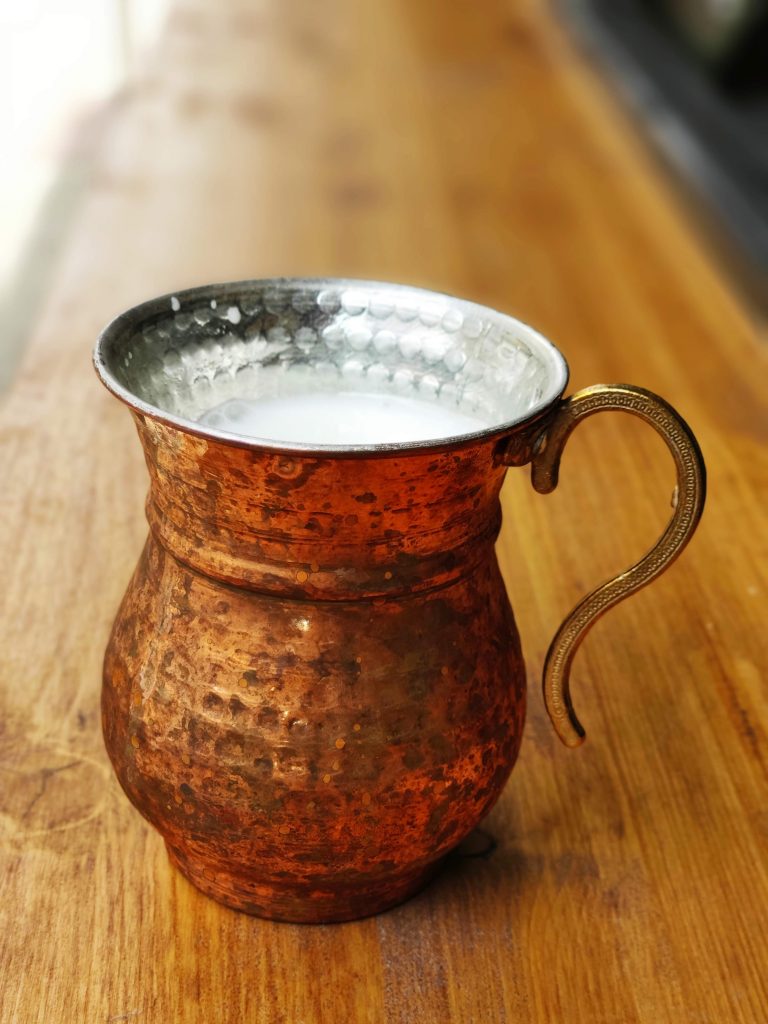
You have also a delightful cold soup called Tarator, whose main ingredient is cucumber. I love it. It is so refreshing. Locals usually drink it in a glass.
And talking about local drinks, you have to try Ayran. It’s a cold yogurt-based beverage mixed with salt that is super cheap and absolutely tasteful. It is quite freshening too.
But the archetypal Bulgarian food is the Banitsa. It is a dish made of pastry filled with cheese, eggs, butter, and anything really. Bulgarians take it for breakfast with coffee or milk. We learned to cook banitsa ourselves and we still cook one every now and then
I love the fact that Bulgarians have managed to preserve their cuisine intact. There are many tradicional Bulgarian restaurants still surviving the invasion of Italian and American fast-food chains.
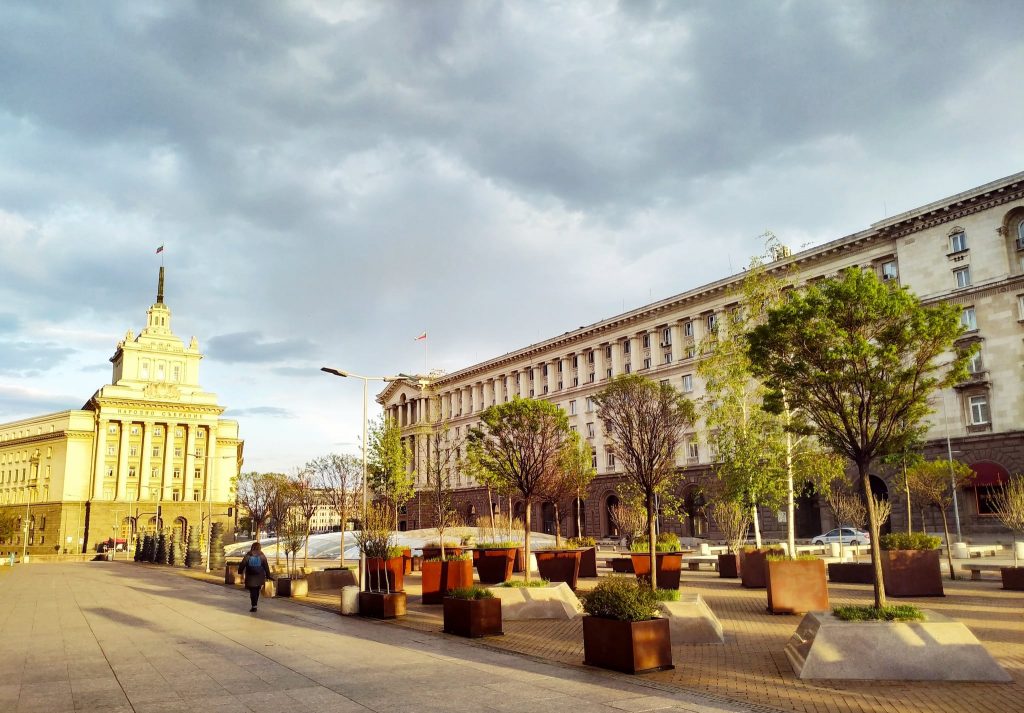
Weather
Sofia has a humid continental climate. Winter here was cold, but of course not as cold as in northern Europe. It snowed a lot during March, but the temperature rarely reached -10 ºC. If you have lived in places such as Riga, Zagreb, or Tallinn, winters are not that hard here.
Summers are warm but soft, not as hot as in Greece or Turkey. We have had two days in which the temperature reached 30ºC, but in general it stays within 23-28 now in June. It is nice to be able to go outside for a walk or a picnic in the park on a Sunday afternoon. You can’t do that in Spain (it’s simply too hot).
The weather changes quite fast, though. It can be rainy on Friday, absolutely sunny on Saturday, and cloudy on Sunday. It can also vary wildly in just a few hours.
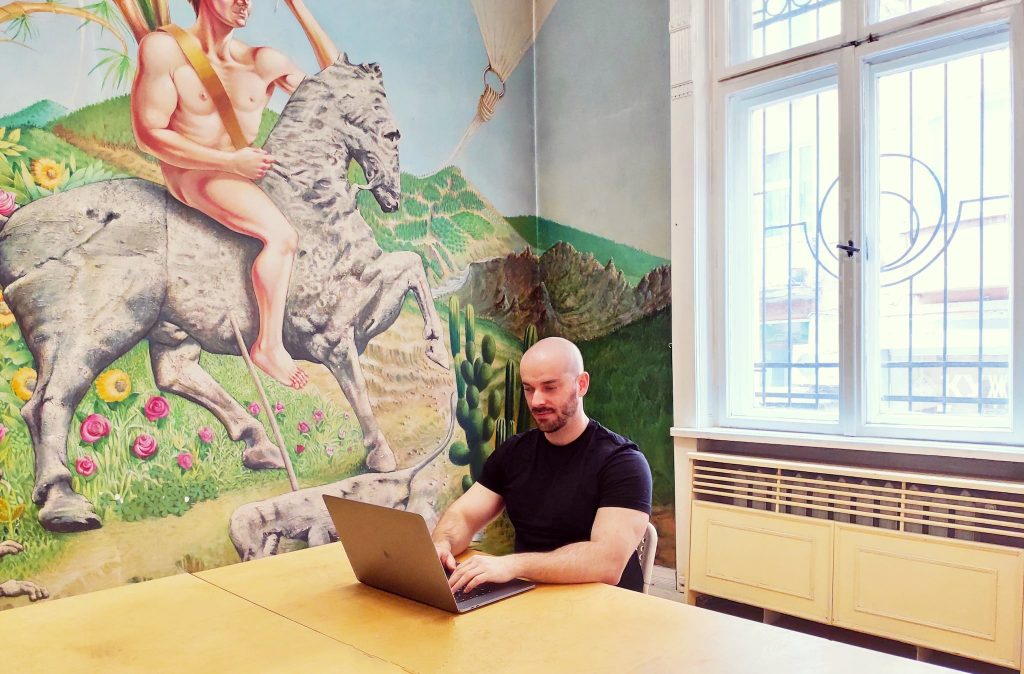
Places To Work
Sofia has plenty of co-working spaces. Here, however, there is not much of a “co-working” scene or “co-working culture”. Perhaps due to the fact that it is not a touristy place and not many digital nomads visit the city.
Whatever the reason, co-workings here work differently. You can’t just look for them on Google and go there, expecting to find an open place with people working and a big sign at the door announcing the space. Most of them are hidden or ask you to schedule a visit with the staff to show you the place.
I wrote about our frustrating experience trying to find a good co-working space in Sofia, and how we finally found an amazing place, in this post.
Wi-Fi in Sofia works well. Not the fastest we’ve seen, but very good. Enough to work comfortably even if you do a lot of web design or need a high-speed connection.
Hospitals And Clinics
Most locals affirm healthcare in Sofia has room for improvement, but my experience has been fairly positive. Sofia has plenty of hospitals, both private and public, and many private clinics, so chances are you will have one near your apartment.
In my case, I had pain in my ear and decided to visit a doctor. I was reluctant because it was April, and the coronavirus pandemic was at its peak. I did not want to go to a hospital and being exposed to the virus, but I had gone through an ear infection in the past and did not want to take any risks.
I opted for a private clinic. The doctor spoke very basic English, but I managed to explain my symptoms, and luckily for me it was not an infection, but a clog of wax blocking my ear. Ten minutes later, after a high-pressure water cleaning treatment, I left the clinic happily relieved. The price? 50 Lev (25€), which is super cheap.

Cost Of Living
And that takes me to the cost of living. Life in Bulgaria in general, and Sofia in particular, is really affordable. Sofia does not have the Euro yet. They have the Lev. Two Leva is one euro, which makes calculating prices quite easy. Indeed, after living in Sofia for some time, you realize things cost here half the price they would cost in other parts of Europe.
You can enjoy a delicious meal with drink for 6-12 Lev (3-6€). A glass of Ayran is 2,40 Lev (1,20€), and a latte is 2,5-3 Lev (1,25 to 1,5€).
Restaurants are so cheap that it may be more expensive doing the groceries than eating outside, which is crazy. There are plenty of Lidl supermarkets in Sofia, which are quite cheap, but also a chain called “Billa” which is much more expensive. I recommend you to stay away from them and go to Lidl instead.
Overall, Sofia offers a high quality of life together with a low cost of living. I can’t think of another place in Europe when you can find this nice spot, not even in Riga.
People
People in Sofia are friendly, honest and humble people. They are always willing to help and our experience has been super positive. With the warm weather, there are plenty of people hanging out in terraces and parks. Bulgarians like to go out and enjoy the good weather much like mediterranean people do, which makes us feel at home. They like partying a lot too.
That said, the Bulgarian society is very traditional, and there is a clear, sexist distinction between men and women. As an example, today at the pulse gym, I was wearing a sleeveless t-shirt. When I had almost finished, a girl from the gym staff, wearing a sleeveless t-shirt, told me that I could not wear a sleeveless t-shirt. At first, I was confused because she was wearing one. I thought I had misunderstood her.
Coming from Spain, which is a very liberal, equalitarian society, it took me some time to realize what was happening, so I asked, “wait, wait, you are telling me that I cannot wear a sleeveless t-shirt at the gym because I am a man, and you can wear it because you are a woman?”. She said yes, so I said “but this is sexist“. She shrugged: “I don’t make the rules”.
So apparently no, women don’t make the rules in Bulgaria. Still, different societies abide by different rules, and you have to respect them, reject your social biases, and try to embrace these cultural differences when you are living in a different country.
Most people speak perfect english here, especially the younger generations. Just remember that Bulgarian uses the Cyrillic alphabet, and that means most things you will find in the city, from traffic signs to the menu at the restaurant, will be in Cyrillic.
While people here are usually kind to foreigners, the Bulgarian population, or more specifically, the Bulgarian official narrative, is quite xenophobic, especially against anything that sounds remotely Turkish, Roma, Muslim, or Arabic. While most Bulgarians we have met are open-minded people, one cant escape this reality after living in Bulgaria for some time.
Religion and tradition still play an important role in Bulgarian society, which may explain why some segments of the population (i.e: older people) still need some time to accept things like people of color, gender equality, or the rights of the LGTBQ community.
Urban Life: Bars, Restaurants, Things To Do
Sofia is the capital of Bulgaria, so that means everything is here. Well… almost. If you want to go to the beach, you need to take a bus or a train to Varna or Sveti Vlas. But all the restaurants, bars, museums, cafés, and the interesting stuff is happening here.
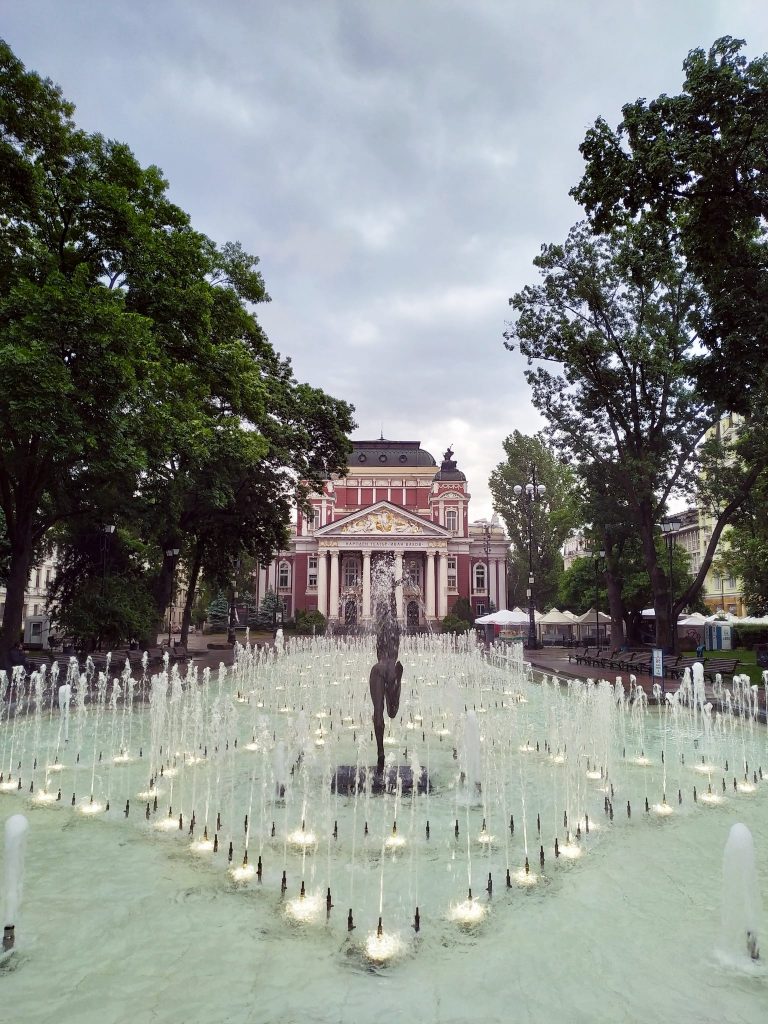
… Bars, restaurants
There is no shortage of good restaurants and cafés in Sofia. The nice thing about the Bulgarian capital is that you don’t even need to look at the prices. Everything is affordable, so usually, there are no ugly surprises.
These are some of the best places we’ve found so far, and one that I won’t recommend even though it is very famous.
- The Old Man And The Sea. A really nice terrace at the corner of the Borisova Gradina Park. Traditional Bulgarian food, excellent beer, and superb prices.
-
The Spaghetti Kitchen. A chain serving international food and some Bulgarian dishes. Not a bad atmosphere, but mainly for tourists, and they treat you like one. Not recommended. - ☕️ Coffeebar Sofia. A small, cozy place serving the absolutely sexiest coffee in town. They have a small bench outside where you can sit and enjoy your coffee (if there’s nobody there already) or you can order your Frappuccino to take away.
- Bistro pesto: a traditional Italian restaurant with a traditional Italian cook that serves REAL Italian food. The cook is super nice and we usually have a nice talk with him every time we visit the place.

- Mezza Grill Sofia. An amazing Turkish restaurant with delightful food at really good prices. Very nice atmosphere and kind staff. Probably the best value for your money in the city.
- Q-ftetaria. A rooftop terrace restaurant serving a modern take on Bulgarian cuisine. Recommended.
- Mangia Station. A street food taco heaven. The only place that served food during the coronavirus lockdown. This place saved us from madness during the hardest weeks of winter.
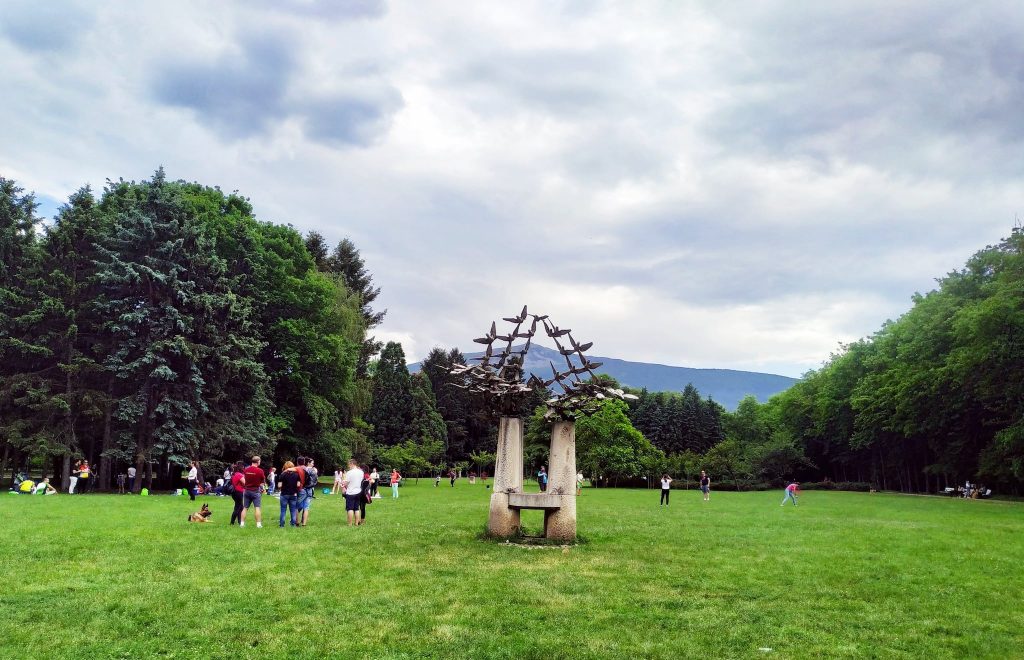
Parks and Gardens
There are plenty of gardens and parks in Sofia, and many of them are huge. People in Sofia like to hang out with their friends there, socialize and enjoy a drink while going for a walk or sitting on the grass.
I would go as far as to declare Sofia “one of the greenest capitals in Europe” when it comes to parks. Only Berlin can really compare to it.
My favorite ones are Borisova Gradina and South park.
Borisova Gradina is the perfect place to go for walking, cycling, rollerblading or skating. We love to go there with a tablecloth to sit on the grass and enjoy a relaxed Sunday afternoon. You also have plenty of affordable terraces and restaurants, like The Old Man and the Sea that I mentioned earlier.
South Park is a massive green lung aptly located in the southern part of the city. It is really big and lush, with a lot of wildlife, a small river, and also a nice terrace that serves local food.
Things to see
Sofia is a majestic city with plenty of landmarks to visit. These are just some of the ones you should not miss if you visit the city.
- “Ivan Vazov” National Theater.
- Cathedral Saint Aleksandar Nevski.
- Banya Bashi Mosque.
- Vitosha Boulevard.
- National Palace of Culture.
- Sofia’s Central Market Hall.
- The Eagle Bridge.
As many other ex-Soviet Union republics, Bulgaria has its own polemic Soviet Army monument, still intact in order to avoid diplomatic clashes with Russia, but frequently vandalized by the local population, who still sees it as a reminder of the Soviet occupation. This one has a super interesting history worth checking out.
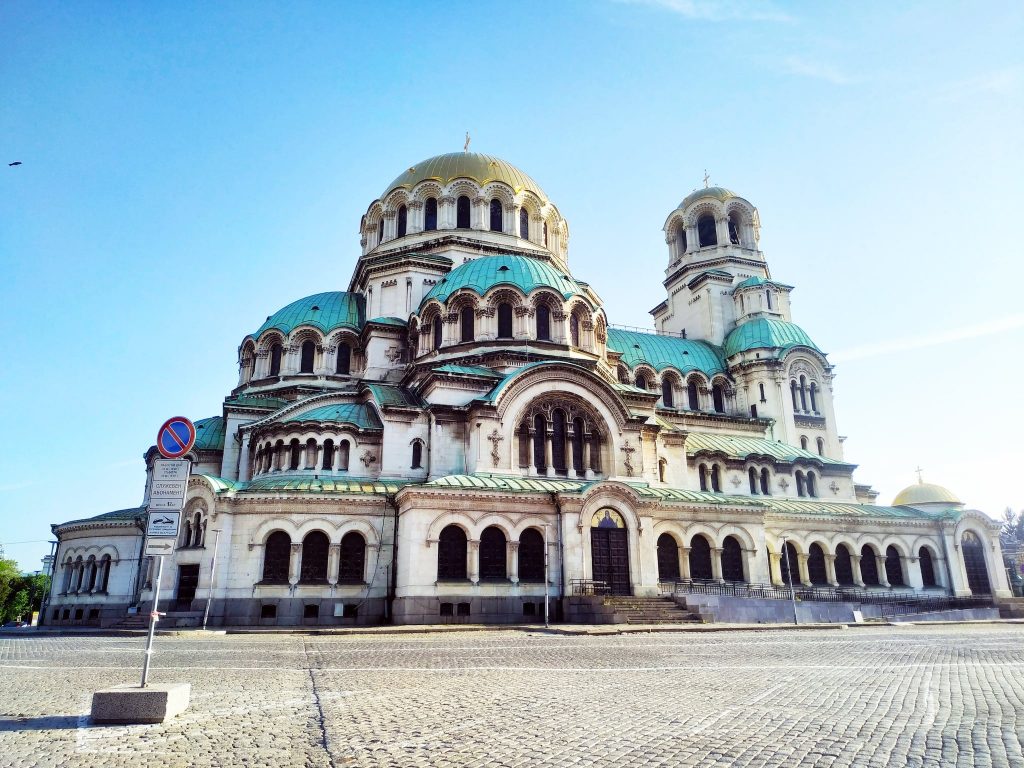
… And things to do
There are plenty of museums in Sofia. Only now, after the lockdown, we are starting to explore them. Make sure to visit the National Gallery (at the edge of South Park) and the National Museum of History.
As I mentioned, the surroundings of Sofia offer many interesting places to visit, including the mountains and forests around the city. Bulgaria has many other interesting towns to visit, such as Plovdiv or Varna, well worth a visit if you plan on spending some time here.
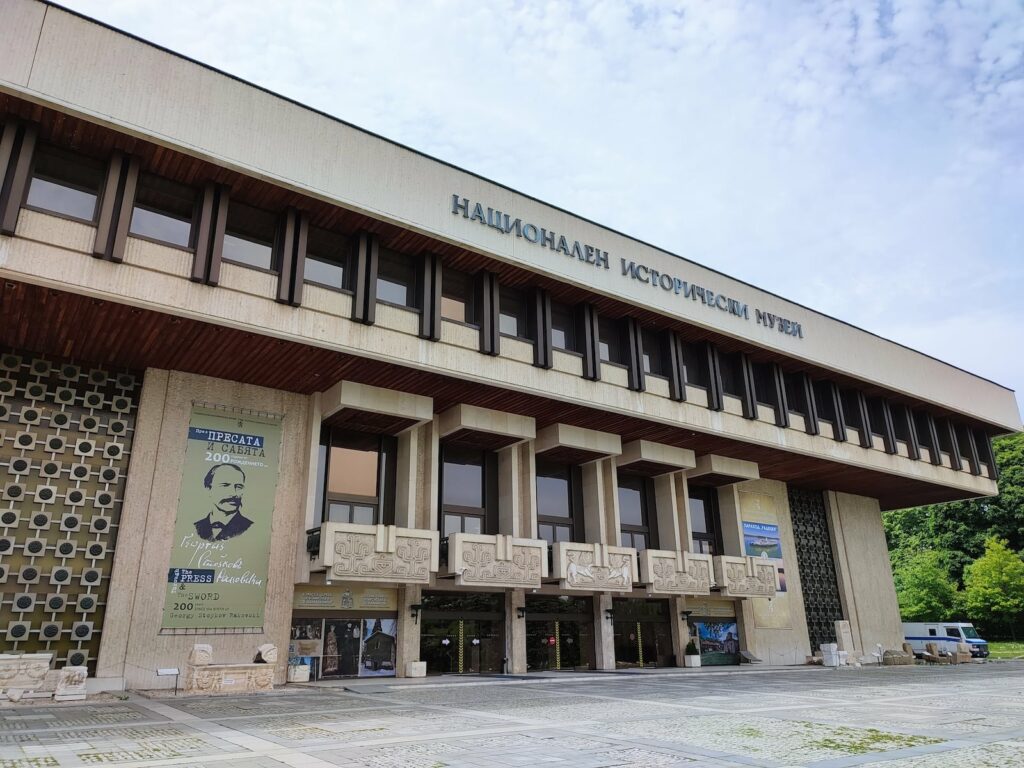
You can also pay a visit to the National History Museum of Bulgaria, where the most impressive marvels are not inside the museum, but outside. One of them is the amazing surroundings, and another how they have deliberately ignored the 500 years of history they call “The Ottoman yoke” as if it never happened, ignoring, in the process, part of their own cultural and national identity.
Life In Sofia for Digital Nomads, Final Verdict
Sofia is simply amazing. I can hardly think of a better place in Europe to stay in terms of quality of life, cost of living, things to do, visit and see, and co-working spaces. Life here is easy and affordable, and it is impossible to get bored.
So I can highly recommend Sofia for digital nomads, expats, or even slow travelers looking for a spot to spend half a year or more. We will stay here until November at least… and will definitely come back.

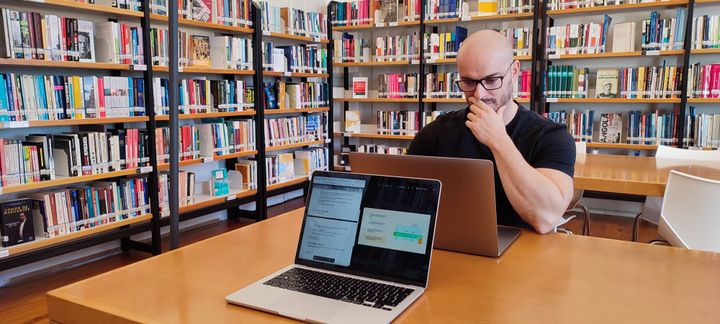
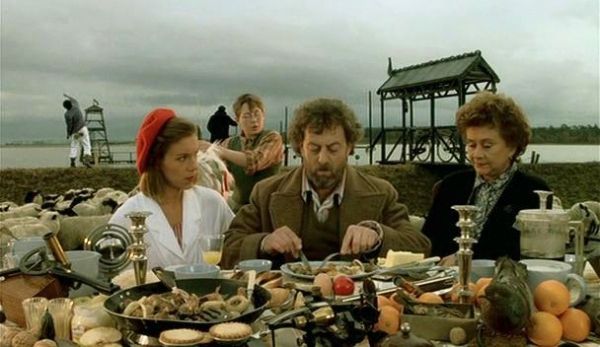
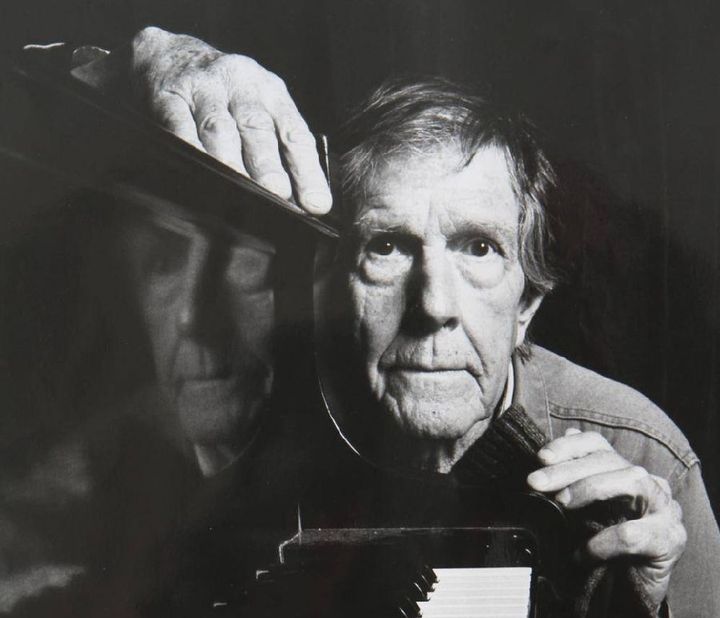
Comments ()